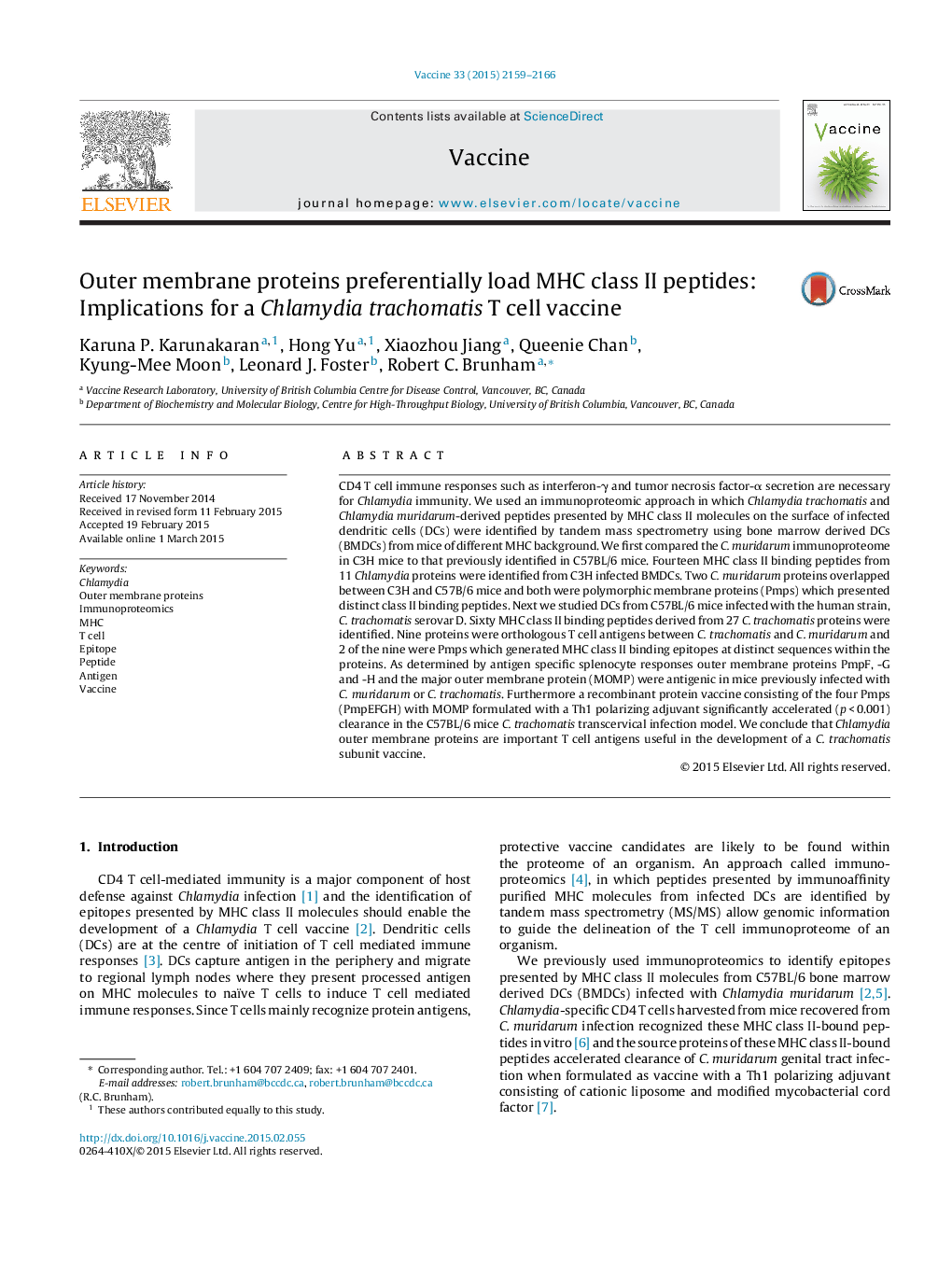| Article ID | Journal | Published Year | Pages | File Type |
|---|---|---|---|---|
| 10963514 | Vaccine | 2015 | 8 Pages |
Abstract
CD4 T cell immune responses such as interferon-γ and tumor necrosis factor-α secretion are necessary for Chlamydia immunity. We used an immunoproteomic approach in which Chlamydia trachomatis and Chlamydia muridarum-derived peptides presented by MHC class II molecules on the surface of infected dendritic cells (DCs) were identified by tandem mass spectrometry using bone marrow derived DCs (BMDCs) from mice of different MHC background. We first compared the C. muridarum immunoproteome in C3H mice to that previously identified in C57BL/6 mice. Fourteen MHC class II binding peptides from 11 Chlamydia proteins were identified from C3H infected BMDCs. Two C. muridarum proteins overlapped between C3H and C57B/6 mice and both were polymorphic membrane proteins (Pmps) which presented distinct class II binding peptides. Next we studied DCs from C57BL/6 mice infected with the human strain, C. trachomatis serovar D. Sixty MHC class II binding peptides derived from 27 C. trachomatis proteins were identified. Nine proteins were orthologous T cell antigens between C. trachomatis and C. muridarum and 2 of the nine were Pmps which generated MHC class II binding epitopes at distinct sequences within the proteins. As determined by antigen specific splenocyte responses outer membrane proteins PmpF, -G and -H and the major outer membrane protein (MOMP) were antigenic in mice previously infected with C. muridarum or C. trachomatis. Furthermore a recombinant protein vaccine consisting of the four Pmps (PmpEFGH) with MOMP formulated with a Th1 polarizing adjuvant significantly accelerated (p < 0.001) clearance in the C57BL/6 mice C. trachomatis transcervical infection model. We conclude that Chlamydia outer membrane proteins are important T cell antigens useful in the development of a C. trachomatis subunit vaccine.
Related Topics
Life Sciences
Immunology and Microbiology
Immunology
Authors
Karuna P. Karunakaran, Hong Yu, Xiaozhou Jiang, Queenie Chan, Kyung-Mee Moon, Leonard J. Foster, Robert C. Brunham,
